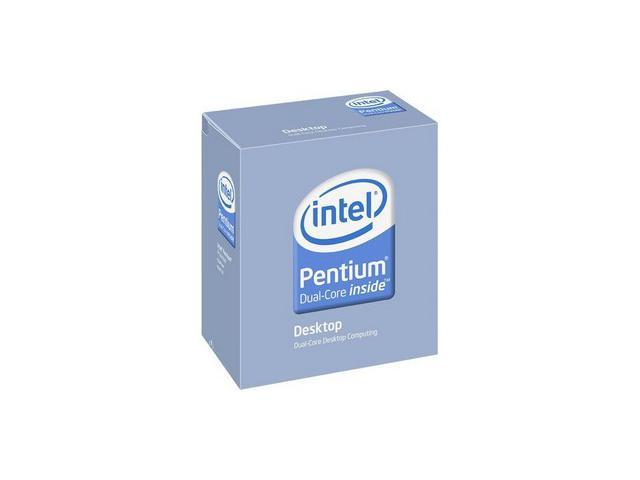-
Intel Pentium Dual Core E5400카테고리 없음 2020. 1. 22. 19:06


- Intel® Pentium® Processor E5400 (2M Cache, 2.70 GHz, 800 MHz FSB) quick reference guide including specifications, features, pricing, compatibility, design documentation, ordering codes, spec codes and more.
- Lack of graphic drivers for Intel Pentium Dual-Core CPU E5400 - 64 bit - 4 series Express Chipset Family - Windows 10. I need to update the graphic drivers to play Minecraft, but I didn't find anything for Intel Pentium Dual-Core CPU E5400 - 64 bit - 4 series Express Chipset Family - Windows 10.
. Predecessor, Successor The Pentium Dual-Core brand was used for mainstream -architecture from from 2006 to 2009 when it was renamed to. The processors are based on either the 32-bit or (with quite different ) 64-bit, and core, targeted at mobile or desktop computers. In terms of features, price and performance at a given clock frequency, Pentium Dual-Core processors were positioned above but below and microprocessors in Intel's product range. The Pentium Dual-Core was also a very popular choice for overclocking, as it can deliver high performance (when overclocked) at a low price. Contents. Processor cores In 2006, announced a plan to return the trademark from retirement to the market, as a moniker of low-cost processors based on the single-core Conroe-L but with 1 MiB of.
Intel Pentium Dual Core E5700

The Pentium J2900 2.41GHz was released over three years more recently than the Pentium Dual Core, and so the Pentium J2900 2.41GHz is likely to have far better levels of support, and will be much.
The identification numbers for those planned were similar to the numbers of the latter Pentium Dual-Core, but with the first digit '1', instead of '2', suggesting their single-core functionality. A single-core Conroe-L with 1 MiB was deemed as not strong enough to distinguish the planned from the Celerons, so it was replaced by, adding 'Dual-Core' to the line's name. Throughout 2009, Intel changed the name back from Pentium Dual-Core to in its publications.
Intel Pentium Dual Core E5400 Graphics Drivers Free Download
Some processors were sold under both names, but the newer E5400 through E6800 desktop and SU4100/T4x00 mobile processors were not officially part of the Pentium Dual-Core line. Intel Pentium Dual-Core processor family Original Logo Rebranded Logo Code-named Core Date released Code-named Core Date released dual (65 nm) dual (45 nm) Jun 2007 Aug 2008 dual (65 nm) dual (65 nm) dual (45 nm) Jan 2007 Nov 2007 Dec 2008 Yonah. Intel Pentium E2180 @ 2.00GHz closeup Subsequently, on June 3, 2007, Intel released the desktop Pentium Dual-Core branded processors known as the Pentium E2140 and E2160. An E2180 model was released later in September 2007. These processors support the extensions, being based on the newer, 64-bit core with.
These closely resembled the E4300 processor with the exception of having 1 MB of instead of 2 MB. Both of them had an 800 MHz. They targeted the budget market above the ( single-core series) processors featuring only 512 KB of L2 cache. Such a step marked a change in the brand, relegating it to the budget segment rather than its former position as the mainstream/premium brand.
These CPUs are highly. Merom-2M. See also: The Pentium Dual-Core brand has been discontinued in early 2010 and replaced by the Pentium name. The Desktop E6000 series and the OEM-only mobile Pentium SU2000 and all later models were always called Pentium, but the Desktop Pentium Dual-Core E2000 and E5000 series processors had to be rebranded. Comparison to the Pentium D Although using the Pentium name, the desktop Pentium Dual-Core is based on the, which can clearly be seen when comparing the specification to the, which is based on the first introduced in the Pentium 4. Below the 2 or 4 MiB of shared-L2-cache-enabled Core 2 Duo, the desktop Pentium Dual-Core has 1 or 2 MiB of shared L2 Cache.
In contrast, the Pentium D processors have either 2 or 4 MiB of non-shared L2 cache. Additionally, the fastest-clocked Pentium D has a factory boundary of 3.73 GHz, while the fastest-clocked desktop Pentium Dual-Core reaches 3.2 GHz. A major difference among these processors is that the desktop Pentium Dual Core processors have a of only 65 W while the Pentium D ranges between 95 and 130 W. Despite the reduced clock speed, and lower amounts of cache, Pentium dual-core outperformed Pentium D by a fairly large margin.
See also. References.
